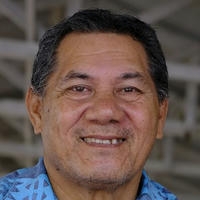Reflecting the growing concern over the Coronavirus pandemic, the Chair of the Pacific Islands Forum and Tuvalu Prime Minister, Kausea Natano, invoked a few days ago the Biketawa Declaration, a security arrangement enabling members to meet on security matters. An urgent virtual meeting of Forum Foreign Ministers will be held this coming Tuesday, April 7, to discuss a regional response to the situation. This is a welcome development, enabling a regional discussion of collective concerns, needs, and potential responses, including exploration of a coordinated way forward working with development partners. It will be likely Ministers will be focused on a broad range of priority matters. But one, if not already on the agenda, will certainly be worthy of some attention: the creation of a humanitarian corridor or pipeline for nations in the Pacific.
Discussion of this corridor is an important issue given the unique characteristics of Pacific nations and current conditions involving a major disruption of transportation networks and limited fallback options over a huge geographical expanse. At the best of times, logistical air and sealift is a challenge in the Pacific. In current trying circumstances, these challenges will loom ever larger.
Currently, the majority of nations in the Pacific are under some form of emergency lockdown and self-imposed isolation. Enacted with little forewarning and preparation, there was often little opportunity to stockpile essential supplies, equipment and other requirements. Now isolated from the rest of the world, these nations will have to rely on a limited stock of resources. While mitigation measures now in place will hopefully avert a deterioration in conditions and facilitate a speedy return to normalcy, there is a need to be prepared for any eventuality. In the event of a deterioration, we may expect a prolongation of the period in lockdown and isolation. The limited resources available in many nations will need urgent replenishment, while desperate life-saving evacuations and the provision of critical medical supplies and equipment may be needed to address an escalating crisis. Given the geographical distances involved in the Pacific, a timely response may not be forthcoming.
Compounding matters, there will be questions about how such lift may be generated, as nearly all commercial transportation networks will have been suspended. In all likelihood, it will be the militaries of development partners that will be called upon to assist. Coordination for this will be assisted by some prior discussion and agreement between nations and development partners. An agreed outline of a pre-approved humanitarian corridor, for example, may help ease a smoother and more efficient deployment of lift capabilities delivering assistance. These prior coordinating arrangements are all the more important in a context where extreme caution has to be maintained over the arrival and clearance of aircraft, ships and their cargoes. Risks of any further transmission must be managed and minimized in any emergency assistance mission.
Beyond current emergency conditions, we should also keep in mind the medium and longer term needs of Pacific nations as they emerge out of the pandemic and embark upon recovery programs and a return to normalcy. What might be the needs of these nations in that longer journey, and what lift requirements may be involved? Considering that much of the rest of the world will be going through similar transitions, can we count on a speedy resumption of transportation connections in the Pacific to expeditiously facilitate such needs? Or, as is more likely to be the case, will there remain significant gaps and deficiencies, requiring supplementary capabilities in the shape of development partner militaries? Yet again, in this circumstance, some modality such as a pre-agreed humanitarian corridor may serve a helpful purpose in this medium term setting.
The present pandemic is unprecedented in many different ways. In past disasters in the Pacific, affected nations could almost always count on the assistance of development partners. Now, despite comforting reassurances, the prospect of an uncertain response, needs to be seriously contemplated. These development partners themselves are gripped by the same pandemic, and grappling with its many serious consequences, and their own emergency lockdowns and isolation measures. With capacities stretched just meeting national needs and priorities, it will be challenging balancing these against an enduring commitment to regionalism and regional assistance. Successfully managing such a dilemma implies an ever greater need to be anticipatory in identifying needs and coordinating among diverse partners a sharing of roles and capabilities – in advance – that might be brought to bear at the right time and place. In light the vast distances in the Pacific, and the limited reach of sea and airlift capabilities of traditional partners such as Australia, France and New Zealand combined, a proactive coordinated approach anchored around a humanitarian corridor construct, may be sensible. Indeed, the expansion of the dialogue around this issue to include additional partners in geographical proximity with significant lift capabilities, such as the United States and Japan, should be a priority.
Dr. Alfred Oehlers is a Professor at the Daniel K. Inouye Asia-Pacific Center for Security Studies in Honolulu, Hawaii
*The views in this article are the personal opinions of the author and are not representative of the United States Government, Department of Defense, or the Daniel K. Inouye Asia-Pacific Center for Security Studies.
